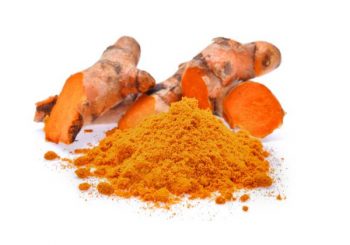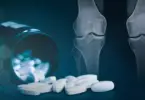 By Sayer Ji
By Sayer Ji
Contributing writer for Wake Up World
Originally published at greenmedinfo.com and reproduced here with permission.
There are over 2,700 studies on the GreenMedInfo database demonstrating the power of turmeric to heal, but this time-tested, safe, and affordable healing substance still has not received FDA approval to “prevent, treat, or cure” disease despite the fact that it is capable of doing exactly that.
[pro_ad_display_adzone id=”110028″]
One of the greatest triumphs of biomedical science today is its role in validating ancient healing modalities that long before the advent of science, and even recorded history itself, were passed down “orally” from generation to generation in the vast body of folkloric medical knowledge that still forms the basis for the majority of the world’s primary health care system. These so-called “natural” or “alternative” modalities, which our species owes its present day survivorship to after eons of dependency on them, are increasingly gaining the attention of men and women in white lab coats intent on unlocking the mysteries of how they work, and in many cases, why they work better than patented, synthetic, chemical-based medications. No better example of this today exists than turmeric.
The Immense Body of Research Substantiating Turmeric for the Prevention and Treatment of Disease
Over the course of the past seven years, we have indexed over 2,700 studies investigating the health benefits of turmeric (or its components) in disease prevention and treatment, discovering an astounding 800+ different diseases that it may be of value in ameliorating. The complexity of this substance in modulating over 150 biological pathways in the body, simultaneously, in a way that almost invariably produces positive results is simply astounding, and could be interpreted as exemplifying a type of plant intelligence if not also inter-species compassion between the plant and animal kingdoms.
The research continues to pile up, with a new published study added to Medline every few days; as of the writing of this article, there are over 9,000 published studies on the topic. In fact, our database on turmeric has grown so large that it takes an entire server just to load the data for professional members performing dynamic filtering by study type, date, etc.
Our regular followers know we report extensively on the evidence indicating that turmeric, and particularly the golden-hued polyphenol known as curcumin it contains, is superior to a wide range of pharmaceuticals both in safety and effectiveness. Some of the most compelling examples are listed below:
- ?Alzheimer’s Disease: Turmeric Produces ‘Remarkable’ Recovery in Alzheimer’s Patients
- Antibiotic-Resistant Infection: Could Turmeric Save Us From The CDC’s ‘Nightmare Bacteria’?
- Oral Health: Turmeric Superior to Chemical Mouthwash In Improving Oral Health
- Well-Being Support: Turmeric: A Wellness Promoting Tonic At Low Doses, Research Reveals
- Rheumatoid Arthritis: Turmeric Extract Found Superior To Blockbuster Drug for Rheumatoid Arthritis
- Cancer Malignancy: Turmeric Extract Strikes To The Root Cause of Cancer Malignancy
- Cardiovascular Disease: Turmeric’s Heart-Saving Properties Confirmed In New Diabetes Study
- HPV Infections: Natural Herbal HPV “Cure” Discovered
- Chemical Weapons Injury: Turmeric Compounds Alleviate Chemical Weapons Injury
- Suboptimal Brain Function: Turmeric Extract Improves Brain Function In One Dose
- Ebola Infection: Turmeric Neutralizes Deadly Viral Infections, Study Suggests
This is only a small subset of studies available that demonstrate the exceptional versatility of turmeric (curcumin) in disease prevention and treatment. You can search through more such research on our Turmeric Research database.
Why Turmeric Has Not Received FDA Approval
Considering the sheer density of data available today to support the health promoting effects of this safe and time-tested culinary ingredient, you would think the government would allow its use to “prevent, treat, or cure disease” — the technical criteria for something to be defined as a legitimate “drug” by the FDA. Indeed, the FDA mission statement includes the following objective:
“FDA is also responsible for advancing the public health by helping to speed innovations that make medicines more effective, safer, and more affordable and by helping the public get the accurate, science-based information they need to use medicines and foods to maintain and improve their health.”
When something so safe, so affordable, so thoroughly time-tested across a multitude of cultures, has so much evidence behind it demonstrating its ability to alleviate suffering, isn’t it highly unethical not to use it, especially in cases where conventional treatments fail?
Sadly, the FDA requires prohibitively expensive clinical trials to be conducted in order to grant the legal right for the populace to be treated by medicinal substances of any kind. In fact, the average FDA-approved drug on the market today required between four to eleven billion dollars in capital to be invested on the front-end. Non-patented substances, no matter how well they work to produce positive health outcomes, are obviously not capable of producing a return on investment as they grant no market exclusivity. Economic considerations (i.e. profit motives), therefore, are the primary reason why natural medicine is still only being practiced outside the medical industrial establishment’s mile high walls.
How did we arrive at this clearly cognitively dissonant place in time? I addressed some of these issues in a previous article, Why The Law Forbids The Medicinal Use of Natural Substances,” looking at one of the historical roots of the impasse:
“It is an interesting footnote in history that shortly after the Declaration of Independence, Congress declared that natural substances, e.g. water or salt, were God’s gift to mankind and that therefore products of nature should be limited in their patent protection. While this was a noble declaration, it has actually been used against those whose rights it would protect. It has forced private interests to synthetically alter natural substances — for instance the burgeoning biotech field of recombinant DNA technology, i.e. genetically modified organisms (GMOs) — for the sole reason that it guarantees them ownership/patent rights.”
And so, because natural substances are a God-given gift [insert the word “Nature-given” if you prefer], freely available without adulteration to be used to treat and even cure disease, the medical system — whose present day focus is profiting off of disease instead of alleviating suffering — goes out of its way to avoid their use, even ostracizing and/or punishing those medical professionals who do incorporate their use in their practice. Likewise, capitalized pharmaceutical interests tinker with natural lead compounds to alter them in such a way that they are converted into xenobiotic chemicals, virtually guaranteeing their toxicity, and making their subsequent FDA drug approval as a novel patentable chemical compound the equivalent of the kiss of death.
This situation has created a great rift between those who believe the government should have the authority to tell us what we can and cannot do medically speaking, and those who believe it is our inborn right to choose food or natural substances to prevent or treat disease regardless of what the Sate deems legal. Obviously, I stand on the side of health freedom. As long as what you choose to do for yourself does no harm to anyone else, that right to choose should be considered inviolable and sacrosanct. Truth be told, turmeric harms no one but the bottom of line of drug companies. Ultimately it is highly unethical for the medical establishment to pay lip service to evidence-based medicine, and turn a blind eye to the accumulating research that this spice, and the 1,700 other natural substances we have indexed on our database, have no legitimate value as treatments for the wide range of ailments that now plague members of our society.
Article originally published: 2015-10-06
Article updated: 2019-06-12
Recommended articles by Sayer Ji:
- Flaxseed: Just An Ounce A Day May Extend Your Life
- 4 Ways To Keep from Losing Your Eyesight
- Has The Holy Grail of Radioprotective Foods Been Found?
- Toxic Massage: The Dark Side of A Highly Therapeutic Modality
- Magnesium Puts Psychiatric Drugs to Shame for Depression
- CDC Stats: Opioids Kill 4x More Than the Vietnam War; Natural Medicine is the Solution
- 6 Natural Ibuprofen Alternatives Backed by Clinical Research
- Brain Regeneration: Why It’s Real and How To Do It
- Beet Juice Boosts Cognitive Function In One Dose
- 6 Bodily Tissues That Can Be Regenerated Through Nutrition
About the author:
Sayer Ji is the founder of Greenmedinfo.com, a reviewer at the International Journal of Human Nutrition and Functional Medicine, Co-founder and CEO of Systome Biomed, Vice Chairman of the Board of the National Health Federation, and Steering Committee Member of the Global Non-GMO Foundation.
For more, visit GreenMedInfo.com and Facebook.com/GreenMedInfo, or sign up for GreenMedInfo’s free e-Newsletter.
© January 31st, 2019 GreenMedInfo LLC. This work is reproduced and distributed with the permission of GreenMedInfo LLC. Want to learn more from GreenMedInfo? Sign up for their newsletter here.
[pro_ad_display_adzone id=”110027″]







